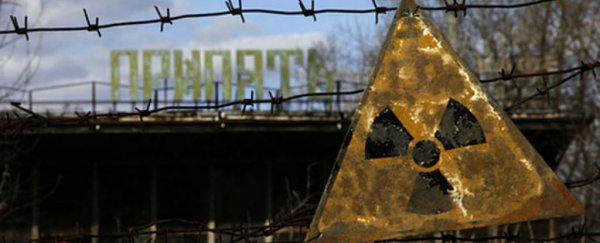As if the locals living near Chernobyl haven't been through enough already, an investigation into milk being produced on the border of the exclusion zone has revealed that it contains 10 times the accepted radiation limits, even 30 years after the devastating meltdown.
The results of the investigation, carried out by the Associated Press (AP), are at odds with internal analyses run by local diary producer, Milkavita. According to Milkavita officials, these tests - which they say are run every six months - have consistently shown that the traces of radioactive isotopes in their milk are well below safety limits.
"It's impossible. We do our own testing. There must have been a mix-up," Milkavita chief engineer, Maia Fedonchuk, told AP journalist Yuras Karmanau.
The finding comes on the 30th anniversary of the worst nuclear meltdown in history, which killed 31 people on 26 April 1986, and has rendered the 30-km-squared exclusion zone around the reactor unsafe for humans for at least the next 20,000 years.
According to Karmanau, the government of Belarus, which received about 60 percent of the contamination that fell on the former Soviet Union following the event, is keen to get the abandoned farmland back in use, "and in a country where dissent is quashed, any objection to the policy is thin".
Results like this, if confirmed by further tests, show why this could be a very bad idea.
The farm where the AP got its milk sample, owned by local dairy farmer Nikolai Chubenok, is located on the edge of the Polesie Radioecological Reserve - a 2,200-square-kilometre (850-square-mile) territory of Belarus that adjoins the Chernobyl exclusion zone.
At the time of the event, 470 Belarusian towns and villages were evacuated within this zone, but now, locals are starting to trickle back in. "There is no danger. How can you be afraid of radiation?" Chubenok told Kermanau.
Chubenok's farm has been producing milk just 45 kilometres (28 miles) north of the Chernobyl site - and 2 km from the exclusion zone - since 2014, and supplies 2 tons (181 tonnes) of it per day for the local Milkavita factory, the AP reports. Products made from his milk are distributed widely through Belarus and parts of Russia.
A sample of his milk was tested at the state-run Minsk Centre of Hygiene and Epidemiology, and as Kermanau reports, the results weren't good:
"The state-run Minsk Centre of Hygiene and Epidemiology said it found strontium-90, a radioactive isotope linked to cancers and cardiovascular disease, in quantities 10 times higher than Belarusian food safety regulations allow. …
The Belarusian Agriculture Ministry says levels of strontium-90 should not exceed 3.7 becquerels per kilogram in food and drink. … The Minsk lab informed the AP that the milk sample contained 37.5 becquerels."
So how could the milk still be contaminated? That is yet to be confirmed, but as Ria Misra explains at Gizmodo, the cows on the farms at the edge of the exclusion zones are eating about 9 kg (20 pounds) of grass every day, and that means the small amounts of radiation in the grass can easily build up.
"In fact, American milk has also seen very small radiation spikes (albeit at a considerably lower size) due to the same process," she says.
So what now? As far as we can tell, only one sample of Chubenok's milk has been investigated by the Associated Press and Centre of Hygiene and Epidemiology lab, and the results have yet to be published in a peer-reviewed journal, so we have to talk the journalist's word for it for now.
Further tests will be needed to confirm the result, and if that happens, the local government will hopefully move to change things. Because babies and very young children are drinking this milk on a daily basis, and we don't want to see another situation like the Flint water crisis inflict untold health problems on these kids for decades to come.
